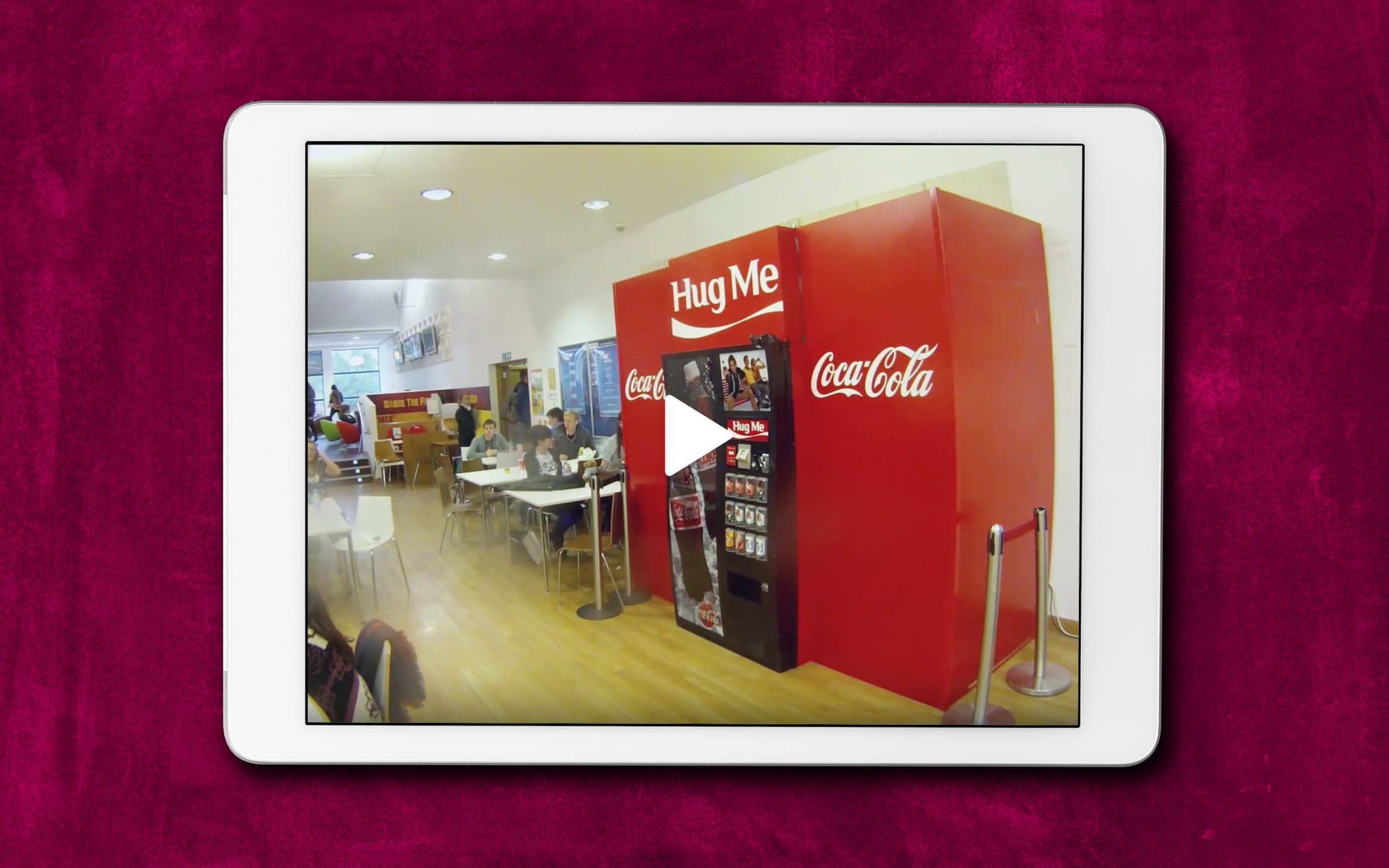Advertising with advocates: How to create your very own brand advocacy programme

Is it high-quality content and a powerful SEO strategy? Maybe it’s your brilliant logo design and your newly designed website? Nope. The most important thing for any company will always be its people. Without people, your company is nothing.
When asked how, and why they make purchases, most people suggest that recommendations and reviews play a major role in their buying decisions. In fact, McKinsey suggests that word of mouth launches anywhere up to 50% of all purchases.
Numbers like these probably don’t come as much of a surprise. After all, when it comes to making your own decisions about the products you need or the services you want – how do you determine who you feel comfortable trusting?
While an advertisement can be inspiring and a logo appealing, there are few things that prompt action as surely as a review from a third-party customer.
The good news is that organisations no longer must spend days calling their customers and tracking them down with direct mail just to get a good review. The virtual world has transformed the traditional word-of-mouth approach to marketing, and social media has ensured that everyone has a voice to talk about your product or service.
All you need to do to make sure that you stay ahead of the competition is ensure that your clients and community are saying the right things about your brand. That’s where a brand advocate campaign comes in.

What is brand advocacy? What does advocacy mean?
So, what is brand advocacy? What does advocacy mean, and how can it improve the performance of your company?
Simply put, a brand advocate is someone who’s willing to help your business grow. By now, you probably know all-too-well that what one person says about your brand has the ability to convert unlike anything else. In a digitally-connected world, customers are more empowered, more social, and more vocal than ever before.
While 75% of customers don’t believe your advertisements, 90% will happily treat the word of friends as gospel. Statistics like these are why word of mouth marketing and influencer campaigns have become more popular today than ever before.
Marketers and organisations around the world are turning to influencers, brand ambassadors, and other forms of inbound marketing solutions to help them achieve their sales goals. Whether you want to acquire new customers, improve retention, or simply build brand awareness, then you need a strategy that gets your brand fans involved.
A brand advocacy programme is your opportunity to make a real difference in this saturated marketplace. After all, the brand advocate in your team is more than just a loyal customer – they’re someone who’s willing to shout about the values of your products and services to anyone who’ll listen.
Whether it’s a satisfied employee or a happy customer, a brand advocate can help you to achieve your goals by convincing leads that you’re just as valuable and trustworthy as you say you are. For most companies, brand advocacy is the ultimate way to get uncertain customers over the fence.

What does advocate mean? The difference between brand advocacy and brand loyalty
Before you jump into building your brand advocacy programme, it’s worth noting that there is a difference between brand advocacy and brand loyalty. While the terms are often used interchangeably, it’s possible to be loyal to a brand without advocating for it. Loyal customers are happy to continue purchasing from the same company, but they won’t necessarily share their opinions online or refer you to new clients.
Brand advocacy takes loyalty to the next level by asking your customers to actively get involved with selling your brand. Essentially, it’s building on the affinity you already have with certain audience members and using that connection to convince them that they should be sharing your content with their friends and families.
While your brand advocacy definition might change depending on how you work with ambassadors and happy employees in your community, the general idea is that you’re getting people outside of your marketing team to market for you. Brand advocates voice positive sentiment on the behalf of your brand and influence people who don’t know you yet. On the other hand, loyal customers simply stick with you when the going gets tough.
While it’s important for your clients to be loyal – as this paves the way for repeat custom and bigger bottom lines, advocacy is the ultimate way to activate your customers and make them into mini-marketers.

How to get started with brand advocacy
By now, you should have a basic answer to the question “What does advocacy mean?” That means that you’re just about ready to get started with your own brand advocacy programme. Remember, businesses that can create positive experiences for customers bring in up to 5.7 times as much revenue.
Accessing your brand advocacy potential means upgrading your marketing plan by tapping into the positive emotions people feel when they interact with your company. While there’s no one-size-fits-all solution for turning customers into advocates, the following tips might be able to help.
Step 1: Define your community
The first thing you need to do when you’re building a brand advocacy programme is research your existing community and find out what kind of people are loyal to your business. For instance, who are your top followers on social media that seem to spend all their time sharing your posts and “liking” your updates?
If you don’t have any customer advocates yet, can you look for a brand advocate internally among your employees? A smart brand will put a great deal of emphasis on the recruiting process when they’re building their advocacy network. Remember, you need to make sure that the people you empower to speak on the behalf of your brand are saying the right things in the right voice. Simply inviting anyone to act as a brand advocate could increase your chances of misconceptions and accidental issues with your reputation.
Step 2: Choose “organic” over “paid”
The more you learn about brand advocacy, the more you’ll discover that there are different strategies available for getting people to talk positively about your brand. The best reason for anyone to advocate for a brand is that they love that company or the products and services they offer. Use the right strategies and demonstrate the perfect brand purpose and you won’t need to ask someone to advertise your company for you – they’ll just do it.
Just look at Apple fans, for instance, they’re ready to defend their choice of gadgets to the death and will often be happy to spend hours talking about how much they love the latest iPhone or laptop.
While it is possible to pay for your brand advocates and ask people to write positive reviews in exchange for money – this is rarely the right option for most companies. Not only do these testimonials come across as fake, harming your brand authenticity, but they can also end up harming your long-term brand reputation because your customers won’t know whether to trust genuine reviews when they do appear.
Step 3: Showcase your brand values
For most companies, successfully investing in brand advocacy starts with building affinity with a target audience. The only way to convince your customers that they want to support you is to show them that you share values that align with their own morals and goals. The great news is that there are plenty of ways to demonstrate your values.
Some companies show off their values within their visual media. For instance, a company that cares about the environment might put an image that suggests sustainability into their logo. Other organisations simply use their content and marketing materials to demonstrate their values. For instance, you could share blogs that showcase some of the recent community outreach programmes you’ve taken part in.
Make sure that you’re constantly making your values a part of your personality on social media, vlogs, and other online content too.
Step 4: Listen to and engage with your customers
It almost goes without saying that you’ll need to be active on the right social networks to make your brand advocacy programme a success. Today, social media is a breeding ground of opinion and reputation management. Make sure that you start by tracking down the platforms your customers and employees use most often, then take some time to listen to the conversations that arise about your brand.
Make sure that you don’t just listen to the positive things that people are saying about your company. While it’s difficult to deal with complaints when you want people to love your business and everything it does, brands that address concerns quickly can transform unhappy clients into incredible brand advocates.
Step 5: Ask people to speak out!
Finally, brand advocacy is all about giving your customers a voice to speak about your brand and the benefits it has to offer. Many customers today appreciate being asked for a review or testimonial because this indicates that your company cares about their opinion. Of course, while everyone might not respond to your request for a comment, a few are likely to get involved, and that’s where you can start your brand advocacy programme.
Just remember that no matter what someone says about your company – you should always thank them for their comments. Take steps to alleviate any issues that unhappy customers are having, and then ask them to share their thoughts again once the issue has been settled.
Empowering the brand advocate: Brand advocacy examples
Sometimes, the easiest way to make a start on your own brand advocacy strategy is to learn from the experts. After all, word of mouth marketing is probably the oldest form of advertising in the world – so it’s safe to say that there are plenty of brand advocacy examples out there to show you how it’s done.
Looking into the campaigns launched by other companies in your industry can help you to refine your brand advocacy definition and determine what you need to do to make sure that you stand out from the crowd. Here are just a few of our favourite brand advocacy examples to get you started.
1. Coca-Cola and their happiness machine
Let’s face it, when it comes to great customer experience, Coca-Cola is a brand that’s difficult to ignore. In 2010, the beverage company launched their “Happiness Machine” experiential event in an attempt to improve brand advocacy. The “happiness” machine dispensed an unlimited supply of Coca-Cola for customers on a university campus. Every time a free can was dispensed, a camera captured the person’s excitement to share on social media.

While the “Happiness Machine” campaign might have only run in one space for a short period of time, the results spread far and wide thanks to the vitality of the strategy and plenty of sharing on social media.
2. Urban Outfitters and the UO Community
Sometimes, the best thing you can do to get your brand advocacy programme off on the right foot is make sure that your customers have a space to talk about their concerns, ideas, and feelings about your brand. Urban Outfitters decided to create their own platform, “the UO Community“, which curates posts of Urban Outfitter products from Instagram accounts.

Within the community, customers can click on photos of outfits to see which products are included within them. What’s more, there are plenty of social links available so that clients can leave messages about their opinions on the clothes. The great thing about this brand advocacy strategy is that it shows UO customers that the brand values their opinions while giving clients something valuable in return.
3. Warby Parker and “Home Try On”
Finally, almost everyone who wears eyeglasses has heard of Warby Parker these days. The company has their very own programme perfect for user-generated content and brand advocacy. The system, called “Home Try On” allows people to choose five different frames which can be then shipped directly to their home so that they can try them on for free.

The feature that transforms this campaign into a brand advocacy programme rather than just a great way to satisfy customers, is that Warby encourages participants to share photos of themselves in the frames using the #WarbyHomeTryOn hashtag. This means that customers can get opinions from their friends on different frames, while simultaneously boosting brand reach for the eyeglasses company.
How to upgrade your brand advocacy programme
At its most basic, brand advocacy is about encouraging your people to say nice things about your product, service, or brand. The more people are willing to rave about the things you have to offer, the more likely it is that you’ll capture the attention of new customers who want to know for sure that they can trust your company.
So, how do you take your brand advocate strategy to the next level? Ultimately, it comes down to the following steps:
Step 1: Provide exceptional service
It probably won’t surprise you to learn that the first step in developing any great brand advocacy solution is making sure that you provide amazing service. People love to support brands that they can develop a meaningful connection with. That’s why excellent customer service is the key to turning an average customer into an advocacy expert.
Remember, when your customers are referring your company to their friends, they’re also putting their reputation on the line. A wonderful experience could be all it takes to convince clients to take a chance and give you their seal of approval.
Step 2: Offer incentives
We mentioned above that you should never buy your brand advocate team, but that doesn’t mean that you can’t take a few extra steps to tempt them into giving you their voice. Incentives are great when you’re building a brand army for the first time. After all, people are less likely to post a review or follow you on Twitter if no-one else is doing it.
Incentivising engagement and sharing is more common than you might think. In fact, 79% of customers say that they only like company Facebook pages in the hope of getting a discount.
Attracting more engagement with a valuable incentive can be a great way to get the ball rolling. For instance, you might consider giving your followers a discount when they share a post with a friend or tweet about their experience with your brand. Some organisations even run competitions where clients can gain entry with an honest review.
Step 3: Start a referral programme
One of the easiest ways to get the most out of a potential brand advocate is to give them an opportunity to drive new customers to your company with a referral program. Referral programs encourage existing customers to do your marketing for you – a process which often leads to better recognition and serious growth.
Once again, a fantastic way to make sure that people want to get involved with your referral programme is to offer rewards. Brand advocacy often starts off smoother when you let your ambassadors know that there’s something in it for them. The rewards you give will differ depending on who your advocates are. For instance, if your advocates are primarily employees you could link your referral strategy to the potential for pay rises.
Step 4: Offer value for customers to share
Finally, while it might be difficult to convince advocates to start randomly sharing links to your products and services – it’s much easier to get them to market your blog posts, videos, and other content. Remember, brand advocacy works when your customers and employees feel as though associating themselves with your brand makes them look good.
If you can share plenty of great information about the recent charitable work you’ve done, for example, then this could make you more shareable to advocates with an interest in CSR. On the other hand, if you know that your customers often face problems that your product can help to solve, you could write blog posts and articles that educate them on an important topic.
Keep in mind that great employee advocacy is all about sharing, and the Adobe State of Content report found that the main reasons people share content is because they want to:
- Raise awareness of an issue.
- Share knowledge.
- Help entertain friends.
- Connect with people.

Making the most of brand advocacy: Why it matters to your company
Every business claims to be the best at what they do. The problem is, no matter how much you believe in your company, and use your identity to show your unique values, you’ll always be fighting back against an overwhelming sense of cynicism in the current marketplace.
In a world where customers hate being “sold to”, word of mouth marketing could be the only way to get ahead and sustainably build loyalty for your brand. With advocacy, you can get your customers to do the advertising on your behalf, so you can focus on building opportunities with an ever-growing customer base.
Brand advocacy can:
- Organically grow brand visibility: Reviews and testimonials, along with content shared by your employee advocates can all contribute to brand growth in a more natural way. It also means that you get to spend less on paid advertising – that’s great for your bottom line.
- Demonstrate the value of your products/services: People will always value the word of another customer over the brand itself. Positive insights into your product or service could build crucial trust between you and your prospective customers.
- Improve your reach: When advocates speak on the behalf of your brand, they’re talking to a brand-new audience that includes plenty of people who are yet to hear about your products and services. With the right brand advocacy programme, you can truly take your market reach to the next level.
Investing time and effort into brand advocacy is a no-brainer for any business. After all, why spend a fortune marketing your company when your community can do it for you?
If you enjoyed this article, you might enjoy these too:
— Your mission if you accept it: Brand aims & objectives
— Marketing techniques for non-conventional thinkers











